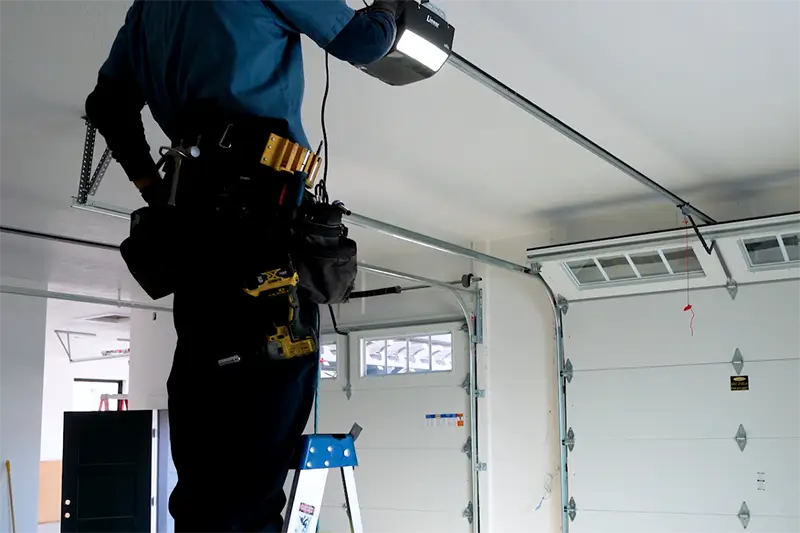Typical Garage Door Issues and Just How to Take care of Them
Garage doors are necessary for both security and comfort, yet they frequently offer a variety of typical concerns that can annoy property owners. While some concerns might appear straightforward to deal with, others might call for a more nuanced understanding of garage door mechanics.
Noisy Garage Door Procedure
A loud garage door procedure can be a considerable source of aggravation for house owners, typically indicating underlying mechanical concerns. Such interruptions may originate from different causes, consisting of worn-out rollers, loosened hardware, or insufficient lubrication. Identifying the resource of the noise is crucial for efficient resolution.
Over time, these elements can wear away, leading to grinding or squeaking noises as the door actions. Additionally, loosened screws or screws in the door mechanism can develop rattling sounds throughout procedure.
Another contributing factor is inadequate lubrication of the door's relocating components. Using a high-grade lubricant to the tracks, springs, and rollers can greatly reduce rubbing and sound. Homeowners ought to do this upkeep occasionally to maintain ideal efficiency.
Last but not least, the garage door opener might also generate noise as a result of its age or mechanical issues. If the noise continues in spite of resolving various other elements, getting in touch with a specialist for a comprehensive assessment and possible fixing might be essential.
Door Won't Open Up or Close
Experiencing a garage door that won't open or close can be incredibly aggravating and commonly indicates a breakdown within the system. A number of aspects can add to this problem, and determining the root reason is important for effective resolution.

Next, evaluate the security sensors situated at the base of the door. These sensors can come to be misaligned or obstructed by particles, preventing the door from operating appropriately. Tidy the sensors with a soft fabric and guarantee they are aligned.
Furthermore, the garage door's inner components must be evaluated. Issues such as a busted spring, damaged rollers, or a harmed opener can impede motion. If any kind of components seem harmed, it may be a good idea to consult an expert for fixings.
Misaligned Tracks
(Premium Service)Misaligned tracks can seriously disrupt the smooth operation of a garage door, resulting in operational failures such as irregular activity or full immobilization. This concern commonly occurs because of a range of elements, including wear and tear, accidental impacts, or inappropriate installment. When the tracks are misaligned, the rollers can stagnate freely, which not just stresses the motor but also postures safety and security dangers.
To identify misalignment, aesthetically check the tracks for spaces or uneven spacing. If you see any kind of inconsistencies, it is essential to address the concern immediately - garage door service. Begin by loosening the screws that safeguard the track to the wall surface, allowing for changes. Very carefully tap the track back right into its appropriate position making use of a rubber club or a similar device, ensuring it is straight and degree.
When the placement is fixed, retighten the screws to protect the track. For an extra permanent remedy, consider enhancing the tracks with additional brackets. Normal maintenance, consisting of cleaning the tracks and making certain rollers are in great problem, can prevent future misalignments. By resolving misaligned tracks quickly, you can bring back the functionality of your garage door and improve its long life.
Broken Springs
Among the various elements of a garage door system, busted springs are among the most typical concerns that can significantly hinder its performance. Garage door springtimes are critical for stabilizing the weight of the door, enabling smooth opening and closing. When a springtime breaks, it can cause a door that is hard to run or, sometimes, completely inoperable.
There are two main kinds of springtimes: torsion springtimes, which are placed over the door, and expansion springtimes, located on either side. Signs of a broken spring include a door that won't open up, a visible gap in the springtime, or a loud sound throughout procedure. Attempting to operate a garage door with a busted springtime can create more damage to the door or the opener.
Repairing broken springs is not a do it yourself task; it needs specialized tools and know-how as a result of the high stress included. It is recommended to speak with an expert technician that can securely site web replace the springtimes and make sure the door is appropriately balanced. Regular upkeep and examinations can aid stop spring failings and extend the lifespan of the garage door system.
Remote Control Issues

The primary step is to examine the batteries in the remote. Change them if they are weak or dead. If the remote still falls short to run, check the garage door opener to guarantee that its sensors are clean and unobstructed. Dirt, particles, or imbalance may hinder the signal transmission between the remote and the opener.
Disturbance from various other electronic tools can additionally hamper remote performance. Guarantee that neighboring tools, such as wireless routers or cordless phones, are not causing interruptions. garage door service. If disturbance is believed, attempt relocating these devices better far from the garage door opener
Sometimes, the remote might require to be reprogrammed. Get in touch with the supplier's guidelines to reset the remote control and integrate it with the garage door opener. If all else stops working and the remote continues to malfunction, take into consideration seeking advice from a professional service technician for a comprehensive assessment and potential substitute of the remote or opener.
Conclusion
(Effortless Experience)In summary, common garage door problems can considerably affect functionality and safety. Proactive maintenance and timely fixings can make certain ideal performance and longevity of garage doors.
 Seth Green Then & Now!
Seth Green Then & Now! Michelle Trachtenberg Then & Now!
Michelle Trachtenberg Then & Now! Pierce Brosnan Then & Now!
Pierce Brosnan Then & Now! Teri Hatcher Then & Now!
Teri Hatcher Then & Now! Sarah Michelle Gellar Then & Now!
Sarah Michelle Gellar Then & Now!